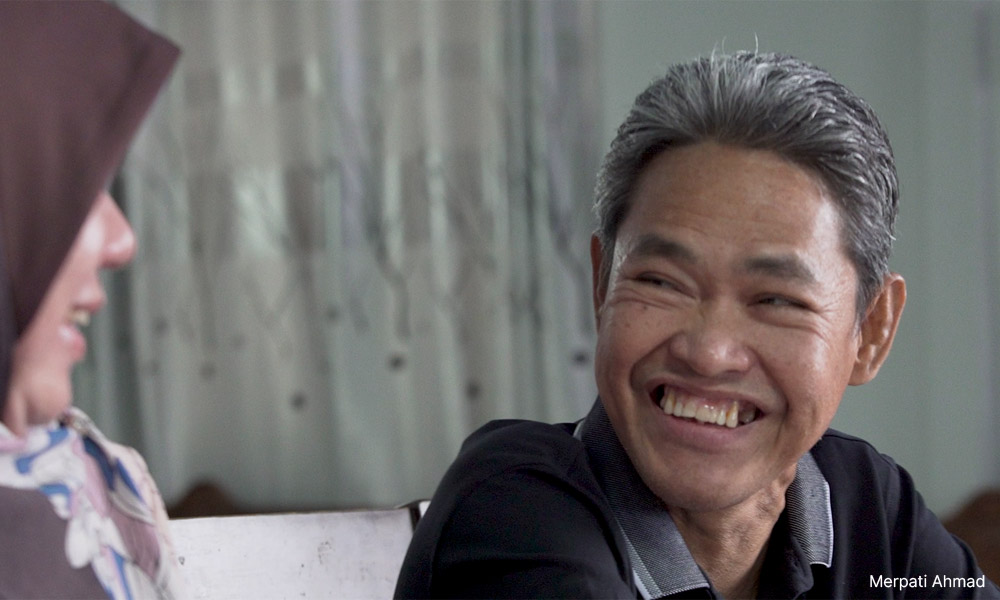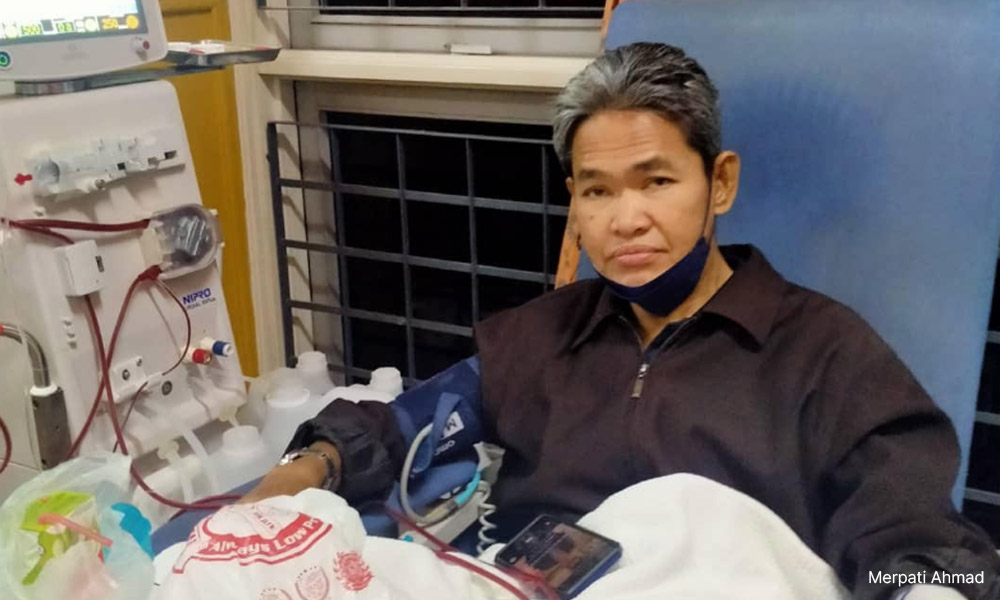Schoolteacher Merpati Ahmad, 49, suffers from a rare medical condition called Fabry disease which is caused by a deficiency of the enzyme alpha-galactosidase - A, which breaks down fat in the body.
Without it, fat builds up in the body’s cells, leading to complications like kidney failure, heart failure, and stroke.
This rare disease is more prevalent among males and symptoms include burning pain in the arms and legs, which worsens in hot weather.
Patients also have to deal with poor blood circulation, problems with the gastrointestinal system, and progressive kidney disease that leads to kidney failure and heart enlargement, which can lead to complications like heart failure and stroke.
The journey to a diagnosis took several years for Merpati, who was born in Samarahan, Sarawak and now lives in Miri with his wife, who works in the administration department at a police station.
The couple have five children - a son and four daughters. The eldest child is pursuing her studies at a local university while their youngest is in Form One.
Long road to diagnosis
The first indications were when blood tests in 2008 revealed he had high protein content in the urine. This was a sign of kidney disease likely caused by Fabry’s disease.
However, he was only diagnosed with Fabry disease in June 2016 and received his first treatment in December 2018. Merpati never heard of Fabry’s disease before being diagnosed but recalls an uncle who suffered similar symptoms.

“This led me to believe it has always existed in my family. As soon as I realised this, I had my children tested. As a father of one son and four daughters, the test results were a relief, as none of them were diagnosed with Fabry disease.
“Yet, I could not help but feel emotional knowing my daughters could potentially be carriers of the disease,” he told Malaysiakini.
Merpati started experiencing health issues when he was in his early 30s.
“It wasn’t until doctors discovered protein traces in my urine and there was swelling in my feet caused by water retention that I started to worry. At that time, I didn’t pay too much attention to it, but looking back, I now realise how significant those early warning signs were,” he said.
He said the diagnosis came as a shock when he was first told he had Fabry’s disease.
“My mind was racing with questions. How did I get this disease? How will I face it? Will I be able to afford the treatment? Will I get to see my children grow up? These were the initial thoughts that consumed me,” he said.
Treatment borne by govt
As he started to learn more about the treatments available, the staggering cost made him wonder if he could afford it without financial assistance.
“As a civil servant, I am grateful for the support I receive from the government, without which I would be struggling to pay for the necessary treatments,” explained Merpati, who receives weekly enzyme replacement therapy (ERT) that provides the enzyme his body needs to help reduce the build-up of fat, reduce pain, and prevent further organ damage.

Administered intravenously, each session takes around three hours. Together with dialysis, which he now receives twice a week, he has to spend about 30 hours at the hospital every month.
The treatment costs around RM100,000 a year, and he has been fortunate to receive aid from the Education Ministry.
“Over the past five years, upon receiving treatment, I have experienced a noticeable improvement in my condition. I used to get tired easily, but after treatment, I began to feel a boost in my energy levels.
“Although I still struggle during hot weather and get occasional cramps in my hands, the symptoms are now less severe than before.
“I also used to fall ill easily and suffer from a high fever at least twice a year. However, I am not getting sick as easily as I used to since I started treatment,” he said.
Adjusting teaching schedule
Merpati still teaches science and physical education but struggles with his condition, especially when the weather is hot.
“My energy levels dip and I become prone to cramps and blackouts. To manage this, I have requested to be scheduled for classes before 11 in the morning, allowing me to continue teaching physical education to the best of my abilities.”
He was then introduced to the Malaysian Lysosomal Diseases Association (MLDA).
His doctor told him of another rare disease patient in Miri, but they have yet to cross paths as he is often busy with treatments and finds it hard to arrange a meeting.
“I am now undergoing dialysis since I have kidney failure. Before this, I had water retention in my lungs and swollen feet, and currently, my doctor informs me that my heart function may also be impacted, but it is still too early to confirm.
“I have to wait and see how it progresses,” he said.

Merpati believes those suffering from rare diseases need government support as treatment costs are too high and are unaffordable for most people.
Though he is getting help now, he is still determining how long this will last.
Nonetheless, he remains optimistic about his future.
“I believe in maintaining a positive attitude and am grateful for the unwavering support from my family. They have been my rock; without them, I would quickly succumb to depression and give up.
“We see this as life’s test and remind ourselves that others are less fortunate. By radiating positivity, we can also uplift our friends and family members.
“To those facing similar challenges, I encourage you to stay strong and positive as we strive towards healing. Let us not burden others but instead be shining examples of strength and offer support to those also affected by rare diseases.
“Together, we can create a community of hope and resilience,” said Merpati.
Challenge of early diagnosis
While rare diseases are usually something that occurs during childhood, they can also start making their presence in adulthood.
They are challenging to detect as there are over 6,000 recorded types of rare diseases, and there is a lack of knowledge, care, and expertise in dealing with patients who suffer from them.
In Malaysia, there are only 13 rare disease specialists and 12 doctors in genetic clinics to care for patients nationwide.
It can often take months or even years for patients to get a proper diagnosis. As these diseases are degenerative, any delay in treatment of the patient’s condition would have a negative impact on their well-being and quality of life.
To help other patients with rare diseases, experts and patient groups advocate for measures such as newborn screening to help identify patients at an earlier stage, improved allocation of funds to make treatment more affordable, and training of more healthcare experts to recognise and treat rare diseases.
If you or someone you know is experiencing symptoms of Fabry disease or any other rare disease, you can also find more information and support through organisations.
This includes the Malaysia Lysosomal Diseases Association (MLDA, https://www.mymlda.com/) and the Malaysian Rare Disorders Society (MRDS, http://www.mrds.org.my/). - Mkini



No comments:
Post a Comment
Note: Only a member of this blog may post a comment.